Pimple and Acne Treatment
 |
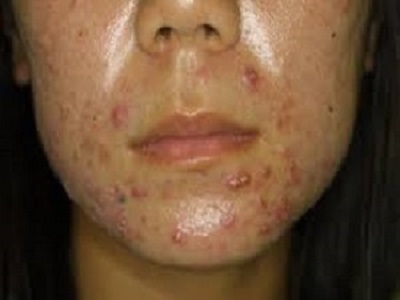 |
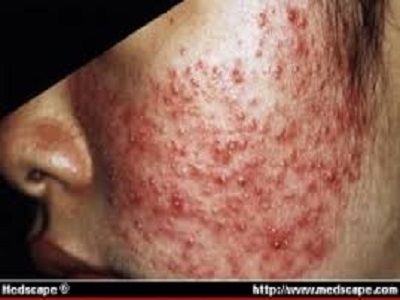 |
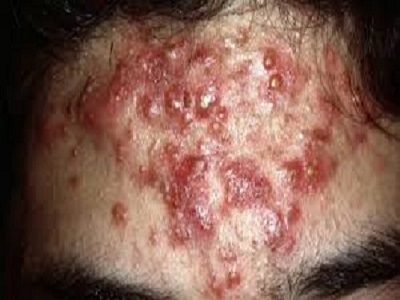 |
Acne and pimples, those pesky little blemishes that seem to pop up at the most inconvenient times, can be a source of frustration for many people. Whether you're a teenager going through puberty or an adult dealing with hormonal changes, finding the right treatment for acne and pimples is essential for achieving clear, radiant skin. While there are countless products and procedures available, sometimes the best treatments can be found right in the comfort of your own home.
Dermasolutions provides effective acne and pimple treatment in Pune. Our experienced dermatologists will
evaluate your skin condition and offer personalized treatment plans based on your needs.
Types of Acne and Pimple Treatments We Offer
Understanding Acne and Pimples
Before diving into treatments, it's important to understand what acne and pimples are and what causes them. Acne is a common skin condition characterized by the formation of pimples, blackheads, whiteheads, and cysts, primarily on the face, back, chest, and shoulders. These blemishes occur when hair follicles become clogged with oil and dead skin cells, creating an ideal environment for bacteria to thrive.
Best Treatments for Acne and Pimples
Maintain a Consistent Skincare Routine: Cleansing your face twice a day with a gentle cleanser can help remove excess oil, dirt, and impurities that can clog pores and lead to breakouts. Look for products containing salicylic acid or benzoyl peroxide, which are effective in treating acne.
Spot Treatments: For targeted treatment of individual pimples, over-the-counter spot treatments containing benzoyl peroxide or tea tree oil can help reduce inflammation and kill acne-causing bacteria.
Topical Retinoids: Retinoids, derived from vitamin A, are effective in preventing clogged pores and promoting cell turnover, which can help reduce acne lesions and prevent future breakouts.
Herbal Remedies: Several herbal treatments have shown promise in treating acne and pimples. Ingredients like aloe vera, green tea extract, and witch hazel have anti-inflammatory and antibacterial properties that can help soothe irritated skin and reduce acne lesions.
Dealing with Acne Scars
Even after acne and pimples have cleared, they can leave behind unsightly scars that can affect your confidence. Fortunately, there are treatments available to help reduce the appearance of acne scars.
Chemical Peels: Chemical peels use exfoliating acids to remove the top layer of skin, revealing smoother, more even-toned skin underneath.
Microneedling: Microneedling involves using a device with tiny needles to create micro-injuries in the skin, stimulating collagen production and improving the appearance of acne scars.
Laser Therapy: Laser treatments target the deeper layers of the skin to stimulate collagen production and promote healing, reducing the appearance of acne scars over time.
Acne & Pimple : Signs, Symptoms, Causes and Treatment
The signs and symptoms of acne and pimples often include the presence of red, inflamed bumps on the skin, commonly known as pimples, which can be painful or tender to touch.
Blackheads and whiteheads, which are small bumps on the skin with a dark or white center, respectively, are also common signs of acne and pimples.
In some cases, acne and pimples can cause the skin to feel oily or greasy, leading to a shiny appearance on the affected areas.
Certain things can cause acne and/or make it worse:
What are the different types of acne ?
Acne can take several forms. They include:
Is acne and pimples the same?
Everyone seems to use the terms “acne” and “pimples” interchangeably.
However, there is a distinct difference between the two. Acne is a disease, while pimples are a symptom of this disease.
Acne is a condition affecting the skin's hair follicles and oil glands. Under your skin, your pores are connected to glands that make an oily substance known as sebum.
What food causes acne and pimples
Researchers say foods high in fat, sugar, and dairy ingredients can raise the risk of adult acne.
Foods such as milk chocolate, french fries, and sugary drinks are among those that can increase acne risk.
Examples include white bread, corn flakes, puffed rice, potato chips, white potatoes or fries, doughnuts or other pastries, sugary drinks such as milkshakes, and white rice.
Laser Treatment for Acne and Acne Scars
Our Acne Scar Treatment provides non-surgical and laser treatments as well as treatments
for skin ailments like pigmentation treatment, hyper pigmentation, pimple marks removal,
acne marks removal, etc.
The treatment that’s right for you depends on your individual condition. If you have mild to moderate acne, such as whiteheads or blackheads, your treatment should be relatively easy.
However, if you have cystic or inflammatory acne, your treatment may be more challenging. Cystic acne is one or more large, painful, red cysts under the surface of your skin.
If over-the-counter (nonprescription) products haven't cleared up your acne, your doctor can prescribe stronger medications or other therapies.
Medicines for Pimples and Dark Spots
Acne medications work by reducing oil production, speeding up skin cell turnover, fighting bacterial infection or reducing inflammation — which helps prevent scarring. With most prescription acne drugs, you may not see results for four to eight weeks, and your skin may get worse before it gets better. It can take many months or years for your acne to clear up completely. The drug your doctor recommends depends on the type and severity of your acne. It might be something you apply to your skin (topical medication) or take by mouth (oral medication). Often, drugs are used in combination. Pregnant women will not be able to use oral prescription medications for acne. Talk with your doctor about the risks and benefits of medications and other treatments you are considering.
Topical medications
These products work best when applied to clean, dry skin about 15 minutes after washing. You may not see the benefit of this treatment for a few weeks. And you may notice skin irritation at first, such as redness, dryness and peeling. Your doctor may recommend steps to minimize these side effects, including using a gradually increased dose, washing off the medication after a short application or switching to another medication.
The most common topical prescription medications for acne are:

- Retinoids. These come as creams, gels and lotions. Retinoid drugs are derived from vitamin A. You apply this medication in the evening, beginning with three times a week, then daily as your skin becomes used to it. It works by preventing plugging of the hair follicles.
- Antibiotics. These work by killing excess skin bacteria and reducing redness. For the first few months of treatment, you may use both a retinoid and an antibiotic, with the antibiotic applied in the morning and the retinoid in the evening. The antibiotics are often combined with benzoyl peroxide to reduce the likelihood of developing antibiotic resistance.
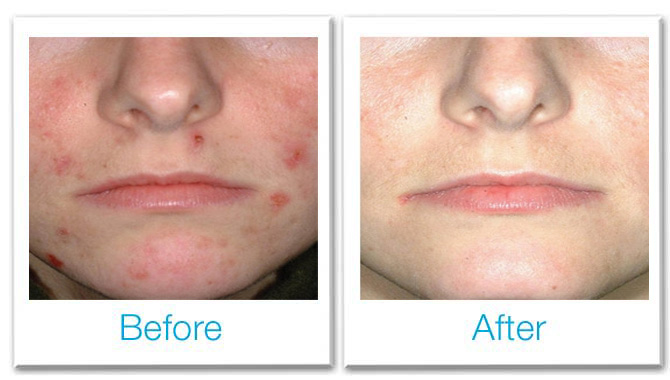 |
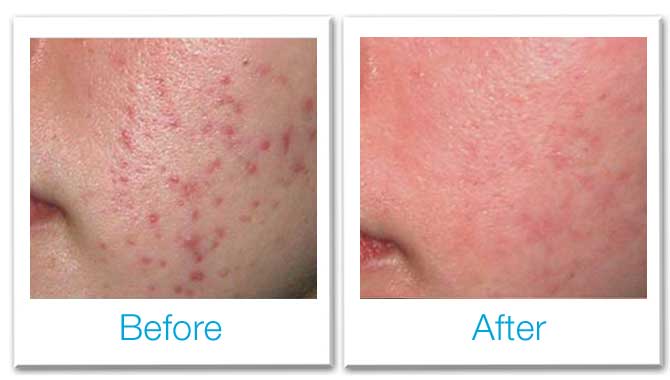 |
Oral medications
Antibiotics. For moderate to severe acne, you may need oral antibiotics to reduce bacteria and fight inflammation.
Your doctor likely will recommend tapering off these medications as soon as your symptoms begin to improve or as soon as it becomes clear the drugs aren't helping — usually, within three to four months. Tapering helps prevent antibiotic resistance by minimizing undue exposure to these medications over a long time.
You will likely use topical medications and oral antibiotics together. Studies have found that using topical benzoyl peroxide along with oral antibiotics may reduce the risk of developing antibiotic resistance.
Antibiotics may cause side effects, such as an upset stomach and dizziness. These drugs also increase your skin's sun sensitivity. They can cause discoloration of developing permanent teeth and reduced bone growth in children born to women who took tetracyclines while pregnant.
Combined oral contraceptives. Combined oral contraceptives are useful in treating acne in women and adolescent girls. The Food and Drug Administration approved three products that combine estrogen and progestin (Ortho Tri-Cyclen, Estrostep and Yaz).
The most common side effects of these drugs are headache, breast tenderness, nausea, weight gain and breakthrough bleeding. A serious potential complication is a slightly increased risk of blood clots.
Other Therapies
- Light therapy: A variety of light-based therapies have been tried with success. But further study is needed to determine the ideal method, light source and dose. Light therapy targets the bacteria that cause acne inflammation. Some types of light therapy are done in a doctor's office. Blue-light therapy can be done at home with a hand-held device.
Possible side effects of light therapy include pain, temporary redness and sensitivity to sunlight. - Chemical peel: This procedure uses repeated applications of a chemical solution, such as salicylic acid. It is most effective when combined with other acne treatments, except oral retinoids. Chemical peels aren't recommended for people taking oral retinoids because together these treatments can significantly irritate the skin.
Chemicals peels may cause temporary, severe redness, scaling and blistering, and long-term discoloration of the skin. - Extraction of whiteheads and blackheads: Your dermatologist uses special tools to gently remove whiteheads and blackheads (comedos) that haven't cleared up with topical medications. This technique may cause scarring.
- Steroid injection: Nodular and cystic lesions can be treated by injecting a steroid drug directly into them. This improves their appearance without the need for extraction. The side effects of this technique include thinning of the skin, lighter skin and the appearance of small blood vessels on the treated area.






